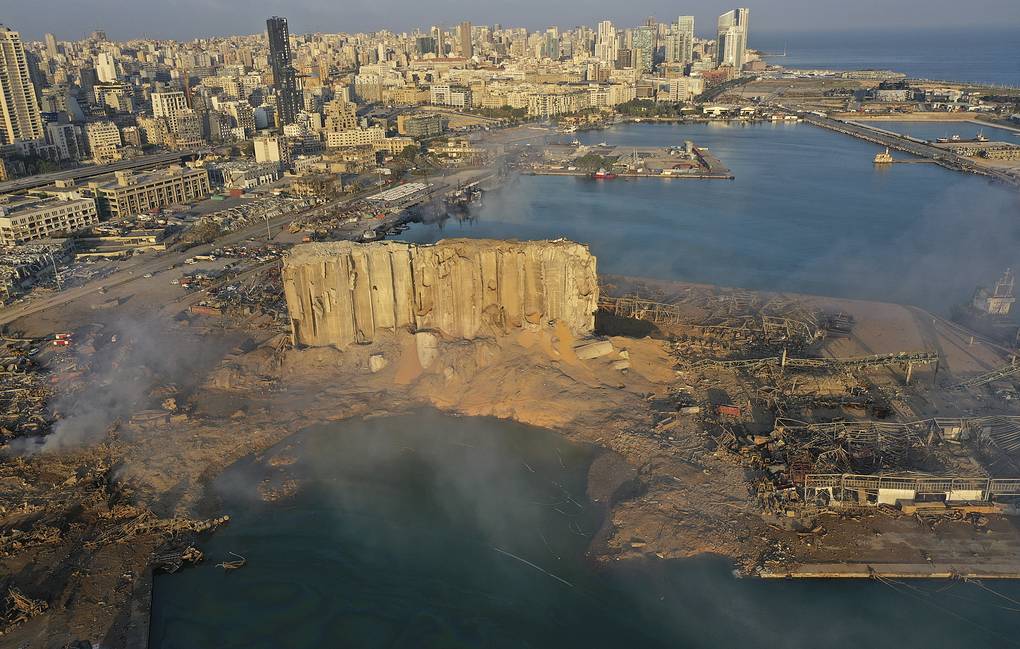
A violentíssima explosão ocorrida no porto de Beirute causou mais de duzentas mortes e milhares de feridos. A região do entorno do porto ficou completamente destruída, mas os efeitos da onda de choque causaram estragos mesmo a dezenas de quilômetros do epicentro. Após um momento de perplexidade pela gravidade do ocorrido, a cidade foi tomada por protestos nos quais a população, enfurecida com as autoridades, acusadas de negligência, exigia a renúncia do Primeiro Ministro Hassan Diab, o que acabou ocorrendo no último dia 10 de agosto, apenas 6 dias após a tragédia.
A fúria da população se explica. Afinal, tudo indica que a causa da explosão tenha sido a combustão de 2.750 ton de nitrato de amônio, armazenadas desde 2014 no porto, de maneira inadequada, após terem sido confiscadas de um navio mercante.
O porto de Beirute é um dos mais importantes do Mediterrâneo oriental, unindo mercados da Europa, Ásia e África, estando conectado a mais de 300 portos em todo o mundo. Além disso, é de vital importância para o próprio Líbano, uma vez que 82% das importações e exportações e 98% dos contêineres destinados ao país passam por ele. Antes da explosão, seus silos tinham uma capacidade de armazenamento de 120 mil ton. Após a explosão, essa capacidade terá que ser reconstruída, a um alto custo, ainda mais para um país que vive tamanha crise econômica. De imediato, parte das cargas poderá ser redirecionada para o porto de Trípoli, mais ao norte e, em menor escala, para o porto de Sidon, ao Sul da capital.
Com a explosão, o Líbano vive a chamada “tempestade perfeita”: uma grave crise política e econômica, acompanhada da pandemia da Covid-19 e, agora, de uma nova onda de revolta popular em Beirute.
Na verdade, os protestos já ocorriam desde o ano passado, motivados pela deterioração econômica, pela ineficiência do governo em prover serviços básicos, como o fornecimento de água e energia elétrica, além dos muitos casos de corrupção, e foram o estopim para a renúncia do Primeiro-Ministro Saad Hariri, em 29 de outubro de 2019. Quem o sucedeu, em janeiro deste ano, foi o Primeiro-Ministro Hassan Diab, que acaba de renunciar.
O Líbano moderno é um pequeno e montanhoso país, espremido contra o Mar Mediterrâneo, que faz fronteira ao Norte e a Leste com a Síria e, ao Sul, com Israel. Sua população é bastante heterogênea, composta por numerosos grupos étnicos, religiosos e culturais. Em razão dessa característica, após obter a independência em 1943, os dirigentes do Líbano estabeleceram um regime de governança política de maneira a tentar garantir uma divisão de poder que oferecesse representatividade política a três grupos étnico/religiosos: os cristãos maronitas (presidência da república), os muçulmanos xiitas (presidente do parlamento) e os muçulmanos sunitas (primeiro-ministro). O parlamento e os cargos públicos também são divididos entre cristãos e muçulmanos.
Além disso, a geografia impôs ao Líbano estar no centro da questão árabe-israelense e, mais recentemente, da disputa árabe-iraniana. Assim, quando disputas sectárias levaram o país a uma guerra civil que durou de 1975 a 1990, tanto sírios quanto israelenses enviaram tropas para o país.
A longa guerra civil trouxe graves consequências para a economia libanesa. No entanto, após a guerra, o país iniciou um ambicioso programa de reconstrução econômica e social, liderada pelo então Primeiro-Ministro Rafiq al-Hariri. O programa teve considerável êxito; entretanto, teve como efeito colateral um substancial aumento do endividamento do país, tanto externo quanto interno.
Esses efeitos econômicos negativos se agravaram muito com a guerra civil na Síria. Estima-se que o país já tenha recebido cerca de 1,5 milhão de refugiados sírios, o que corresponde a aproximadamente um quarto da população do país. O turismo e os investimentos externos reduziram drasticamente. O sectarismo religioso entre sunitas e xiitas recrudesceu, com libaneses sunitas apoiando os revoltosos sírios, enquanto os xiitas apoiavam o presidente sírio Bashar al-Assad.
O conflito entre a milícia xiita Hezbollah e Israel, que afeta especialmente a região sul do país, também está longe de uma solução. Iniciada durante a guerra civil, na década de 1980, seu ápice foi em 2006, quando o conflito escalou para uma ação do exército israelense em território libanês, para destruir alvos do Hezbollah, mas os enfrentamentos de baixa intensidade entre ambos permanecem.
É neste ambiente de altíssima complexidade e inúmeras dificuldades que o Líbano enfrenta mais essa crise. A destruição do porto de Beirute, de fundamental importância econômica, serviu de estopim para a explosão de protestos que resultaram em mais uma mudança de governo. Os vários grupos político/religiosos do país vão tentar se reposicionar buscando aumentar seu poder político, sempre sob o olhar atento e interessado de iranianos, árabes, israelenses, sírios, turcos, franceses, russos e norte-americanos. E assim o Líbano vai recomeçar. Pela enésima vez.
Oficial de cavalaria do Exército, formado na Academia Militar das Agulhas Negras, em 1990. Foi comandante do 11º Regimento de Cavalaria Mecanizado, em Ponta Porã/MS; instrutor da Academia Militar das Agulhas Negras, da Escola de Aperfeicoamento de Oficiais e da Escola de Comando e Estado-Maior do Exército.
Atualmente serve no Comando de Operações Terrestres – COTER – em Brasília/DF.
Os artigos publicados são de opiniões pessoais. Não fala em nome do Exército. As ideias aqui expressas são fruto da sua experiência profissional e dos estudos que realizou.
